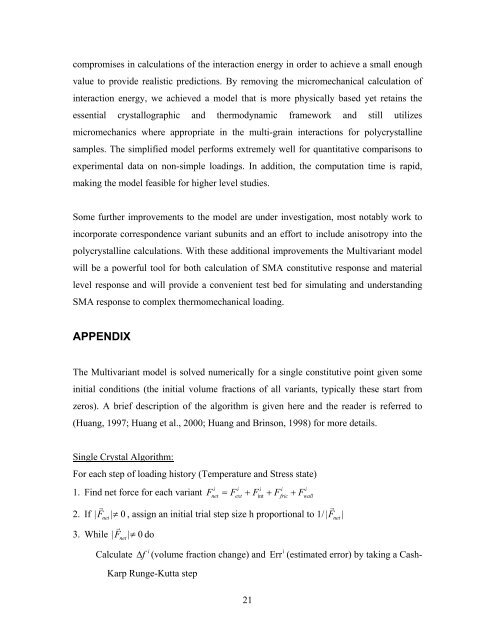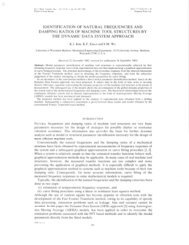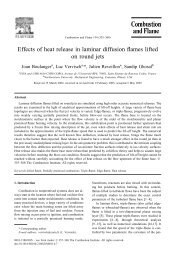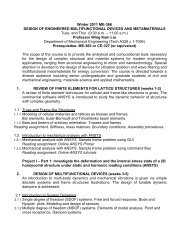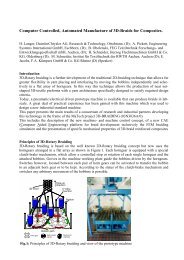A Simplified Multivariant SMA Model Based on Invariant Plane ...
A Simplified Multivariant SMA Model Based on Invariant Plane ...
A Simplified Multivariant SMA Model Based on Invariant Plane ...
You also want an ePaper? Increase the reach of your titles
YUMPU automatically turns print PDFs into web optimized ePapers that Google loves.
compromises in calculati<strong>on</strong>s of the interacti<strong>on</strong> energy in order to achieve a small enough<br />
value to provide realistic predicti<strong>on</strong>s. By removing the micromechanical calculati<strong>on</strong> of<br />
interacti<strong>on</strong> energy, we achieved a model that is more physically based yet retains the<br />
essential crystallographic and thermodynamic framework and still utilizes<br />
micromechanics where appropriate in the multi-grain interacti<strong>on</strong>s for polycrystalline<br />
samples. The simplified model performs extremely well for quantitative comparis<strong>on</strong>s to<br />
experimental data <strong>on</strong> n<strong>on</strong>-simple loadings. In additi<strong>on</strong>, the computati<strong>on</strong> time is rapid,<br />
making the model feasible for higher level studies.<br />
Some further improvements to the model are under investigati<strong>on</strong>, most notably work to<br />
incorporate corresp<strong>on</strong>dence variant subunits and an effort to include anisotropy into the<br />
polycrystalline calculati<strong>on</strong>s. With these additi<strong>on</strong>al improvements the <str<strong>on</strong>g>Multivariant</str<strong>on</strong>g> model<br />
will be a powerful tool for both calculati<strong>on</strong> of <str<strong>on</strong>g>SMA</str<strong>on</strong>g> c<strong>on</strong>stitutive resp<strong>on</strong>se and material<br />
level resp<strong>on</strong>se and will provide a c<strong>on</strong>venient test bed for simulating and understanding<br />
<str<strong>on</strong>g>SMA</str<strong>on</strong>g> resp<strong>on</strong>se to complex thermomechanical loading.<br />
APPENDIX<br />
The <str<strong>on</strong>g>Multivariant</str<strong>on</strong>g> model is solved numerically for a single c<strong>on</strong>stitutive point given some<br />
initial c<strong>on</strong>diti<strong>on</strong>s (the initial volume fracti<strong>on</strong>s of all variants, typically these start from<br />
zeros). A brief descripti<strong>on</strong> of the algorithm is given here and the reader is referred to<br />
(Huang, 1997; Huang et al., 2000; Huang and Brins<strong>on</strong>, 1998) for more details.<br />
Single Crystal Algorithm:<br />
For each step of loading history (Temperature and Stress state)<br />
i i i i i<br />
1. Find net force for each variant Fnet = Fext + Fint + Ffric + Fwall<br />
�<br />
�<br />
2. If | Fnet | ≠ 0 , assign an initial trial step size h proporti<strong>on</strong>al to 1/| Fnet |<br />
�<br />
3. While | Fnet | ≠ 0 do<br />
Calculate ∆f i (volume fracti<strong>on</strong> change) and Err i (estimated error) by taking a Cash-<br />
Karp Runge-Kutta step<br />
21


